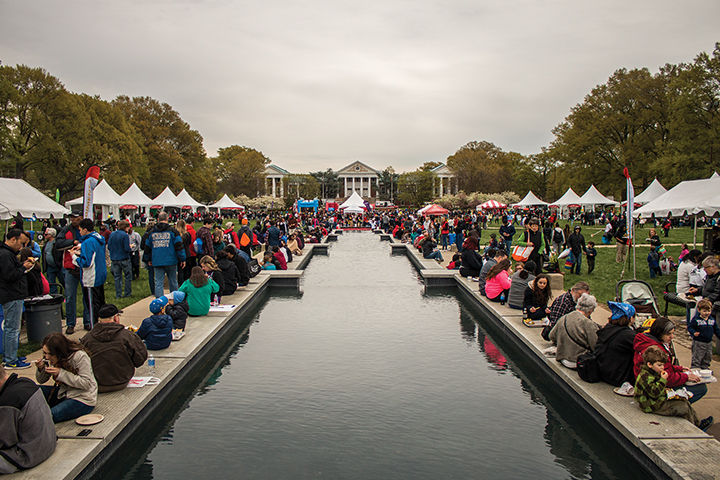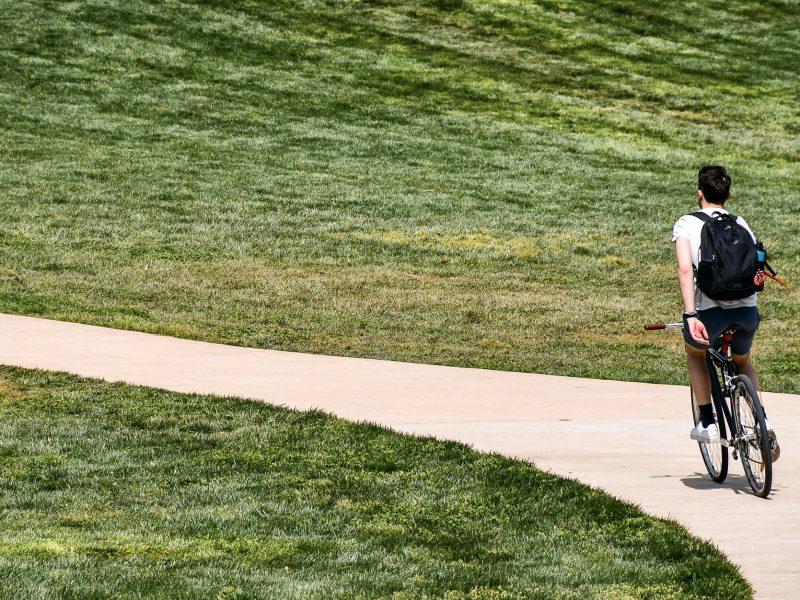Former University of Maryland President Brit Kirwan knew reliable state funding wouldn’t last forever.
“We can’t count on [state funding] always to do the things we need to do at the university,” Kirwan said. “Philanthropy, private giving really provides the margin of excellence for an institution.”
About 25 years after Kirwan first introduced comprehensive fundraising efforts, this university ranked fifth among schools in the Washington region for cash donations in fiscal year 2015, according to Council for Aid to Education data.
This university’s donor cash flow spiked from $81.79 million in fiscal year 2014 to $122.7 million in 2015, topped only by Georgetown University ($172.45 million), the University of Virginia ($233.22 million), George Washington University ($248.03 million) and Johns Hopkins University ($582.68 million).
The university’s fundraising total for fiscal year 2015 — including Kevin Plank’s $25 million and Brendan Iribe’s $31 million pledged contributions — was about $202 million.
Given the university’s growth, ambitious construction projects and constrained state funds, building a strong donor base has become a necessity.
“Nobody gives you money because you need the money,” university President Wallace Loh said. “People give you money to make an impact, to make a real difference.”
STATE OF THE STATE
Despite state support, the four current main projects on the campus are led by significant donor gifts, university spokesman Brian Ullmann said, reinforcing the importance of philanthropic funding to drive progress.
While the Cole Field House renovations cost a projected $155 million, for example, only $25 million will come from the state, compared with about $90 million from private donations, The Diamondback reported in November 2014.
The state often requires capital projects to have substantial donors to move forward, said Sharon Akers, the executive director of the Edward St. John Foundation who negotiated St. John’s $10 million pledge, announced in 2011, for the Edward St. John Learning and Teaching Center.
“The state basically said, ‘We’ll give you X amount of money, but what you need to do is you need to find a major donor who will give a large amount and be a naming donor,'” Akers said. “You look at all the great projects that are happening — none of that could have been possible without the private support.”
Public institutions such as this university have also been forced to rely more on donor funding because consistent increases in state funding are never a guarantee.
Between fiscal years 2003 and 2004, state funding dropped from more than $360 million to about $306 million. Between fiscal years 2011 and 2013, funding stayed relatively constant, rising from about $411.5 million in 2011 to about $415.7 million in 2013.
Between fiscal years 2013 and 2015, state funding climbed to about $482 million, only to return to relative stagnancy at about $481 million for fiscal year 2016.
The state’s unexpected budget cuts in fiscal year 2015 also led to a $15.6 million cut from this university’s budget, leading to staff furloughs, a midyear tuition increase and a hiring and construction freeze beginning in December 2014.
“Every state university would tell you the same thing, that they have to count more and more on philanthropy,” said Kathryn Jarvis, chief of staff in Virginia’s university advancement senior vice president’s office. “The other things … you don’t have any control over them, but you can somewhat control philanthropy.”
GETTING THE BALL ROLLING
Apart from being proactive about raising money, the formal fundraising efforts and campaigns that began at this university in the 1990s were largely playing catch-up to “aspirational peers” such as Virginia and the University of North Carolina, Kirwan said.
Virginia, also a public institution, launched its first campaign in 1979 and began serious, consistent fundraising efforts in the mid-1990s, Jarvis said. It also ran a $3 billion campaign from 2006 to 2013.
Other institutions “had back then very substantial fundraising programs,” Kirwan said. “I recognized that we could only rise to those heights if we also built a strong fundraising program.”
Early on in Kirwan’s administration — he was university president from 1989 to 1998 — Kirwan built a development operation, appointed a development vice president, created an alumni association in 1989 and launched in 1996 the university’s first capital campaign, which ran until 2002 and raised $456 million, said Peter Weiler, university relations vice president.
The next comprehensive campaign, Great Expectations, raised $1 billion from 2006 to 2012.
The university intends to continue the upward trajectory in fundraising and is in the planning stages of its next campaign, Weiler said.
“We’re just working out the planning, putting a volunteer group together, working on some of the larger foundation gifts,” Weiler said. “Campaigns really focus the university on the philanthropic agenda.”
While Loh maintained there are new projects in the planning stages, he and Weiler said discussion of such projects, as well as any potential hefty donor gifts, would be premature. Weiler did disclose that the university has already succeeded in raising $95 million this fiscal year.
To ensure successful fundraising in future years, Loh said the university is also actively filling fundraising positions, many of which were lost to budget cuts from 2008 to 2011 in wake of the recession. The university currently has 76 professionals on its fundraising team, Weiler said.
“There is a direct correlation between how much money you raise and how many people are pounding the pavement,” Loh said. “We have the wonderful problem of a large pool of potential donors. We don’t have enough people to contact all of them.”
THE TRICK IS THE TRACK RECORD
One of the main reasons this university was able to amass 28 gifts of more than $1 million in fiscal year 2015 was the “buzz” circulating around it, Weiler said.
“[There’s] a lot of great things going on, and that’s everything from College Park and the revitalization of College Park, just really great academic programs to our athletic teams and the Iribe Center and engineering,” Weiler said. “[It] just gets people’s attention.”
A notable part of successful fundraising — especially when seeking these six- or seven-figure gifts — is knowing how to ask for them in the right way, Loh said.
“We don’t go around like, ‘Hey, will you give to cause X or cause Y?'” Loh said. “You ask what they’re interested in, how they’d like to contribute to the university, and then some ideas float and then they zero in on something.”
Asking for transformative gifts that fulfill a “big idea” is key, said Andrew Rentschler, executive director of Johns Hopkins’ campaign operations.
“Anyone can ask for a $50 million gift,” Rentschler said. “If you can’t actually act upon the gift in a way that the donor finds useful to society and to the institution, the donors will see through that.”
While Johns Hopkins sat atop the Washington region list and ranked sixth in the nation for fiscal year 2015, Rentschler admitted it’s largely because as a private institution, Johns Hopkins came early to the fundraising game. Its first fundraiser in 1910 raised more than $1 million, and it’s currently in the midst of a $4.5 billion campaign.
“As a private institution it was kind of a necessity, probably from an earlier standpoint than say Maryland would have, because [the University of Maryland] had states funds to rely on,” Rentschler said, noting the institution also receives a lot of its funding from being one of the world’s top medical operations.
But sometimes, it’s not about strategy and program maturity; it’s about good timing and the “outliers,” Rentschler said.
Georgetown University received a $100 million gift in fiscal year 2014, catapulting its total funding for that year. Bart Moore, Georgetown’s vice president of advancement, compared the school to a “great public university” in part because it didn’t start its own modern fundraising campaigns until the early 1980s.
“When you get into a position where you’re fortunate enough to be fundraising for an institution that sometimes receives these very large gifts, you have to be prepared for that fluctuation, that variability from year to year,” Moore said.
George Washington University similarly saw significant growth in fiscal year 2015, thanks in part to “assets from the university’s historic collaboration with the Corcoran Gallery of Art and Corcoran College of Art + Design and the National Gallery of Art,” according to its website.
However, comparing universities’ fundraising successes can be like comparing apples and oranges due to a variety of factors, such as the wealth of schools’ alumni and the resources of their fundraising programs, Jarvis said.
For Kirwan, he said this university’s future in fundraising has nowhere to go but up.
“What I hoped to see 25 years ago has really come to pass,” Kirwan said. “It’s making a huge difference.”



